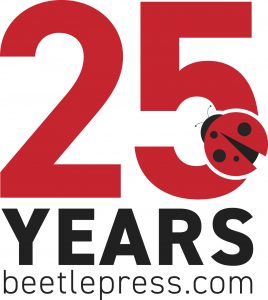Telling the Story of Glenmeadow’s Political Panel

I help Glenmeadow, a life plan community in Longmeadow, plan educational programs, which I then also promote. In September, the first program was held in West Springfield. Called “Both Sides of the Aisle: A conversation about America’s two-party system,” it drew a crowd of roughly 50 people. The following is the blog I wrote about it.
Nearly a third of the people gathered for Glenmeadow’s first fall Glenmeadow Learning presentation, “Both Sides of the Aisle: A conversation about America’s two-party system,” raised a hand to indicate they had at least one friend with whom they can no longer discuss politics.
To panelist Ron Chimelis, an editorial writer for the Springfield Republican, that told the full story about the division in the United States between Democrats and Republicans.
What participants learned, though, is that that dissension goes back to the framing of the United States Constitution. “While today’s political climate feels increasingly uncivil, there is nothing wrong with ideological division between the parties, which gives voters clear alternatives,” said panelist Samuel VanSant Stoddard, assistant professor of political science at College of Holy Cross.
Led by moderator Rob Genest, op-ed editor for the Springfield Republican, discussion points during the talk organized by Glenmeadow, a life plan community in Longmeadow, Massachusetts, included a look at the two-party system in the context of the United States Constitution; how the two-party system has worked over time; dissent between the parties; contributors to the divide, such as special interest groups, media, and social media; state and local politics; and whether Trump exacerbated the division we see today.
In addition to Chimelis and Stoddard panelists were Matt Szafranski, the editor/founder of Western Mass Politics and Insight; Donald Robinson, professor emeritus of government at Smith College; and Brooke Hauser, editor of the Daily Hampshire Gazette in Northampton.
Taking audience members back to the roots of our system, Robinson said the framers of the Constitution themselves had opposing views in 1787. “There was polarization,” he said. “Controversy was as ferocious in those days. We didn’t invent that.”
President George Washington warned the country’s leaders about the dangers of political parties, Robinson said, adding, “He said they are the bane of the existence of republics like ours, and he was strongly opposed to their use.”
Younger framers of the Constitution were involved in creating the first parties.
Stoddard said the parties were not always Democrat and Republican; they grew out of party organizations that shifted and grew stronger over time. “The parties have shifted dramatically since they came about and also the populations they serve,” he said. Pointing to increasing Democratic strength in the South and Republican strength in the Midwest, Stoddard added, “The Democrats were the party of the South, and the Republicans were the party of the North. That has largely flipped, and I see we are going to flip again.”
Szafranski said emerging political organizations need 3 percent of the vote to be considered a major party. In Massachusetts, the Green Party is the only third party that holds that distinction. “A Green Party candidate could conceivably win,” he said.
Hauser, Chimelis, and Genest said the country’s political dissension at times exacerbates negative conversations between newspapers’ editorial staffs and readers. Hauser said she must be careful about words that are used—and how they are used. For instance, social justice buzzwords can turn some readers off before they have a chance to consider the content of the whole article.
“We make sure we are being fair and that there is balance,” she said. “We get into arguments, editing. It’s a constant dialogue that I find interesting.”
Hauser added, “The highest compliment I can receive is, ‘I read your article from beginning to end.’”
Contact me if you need help planning a program, or promoting one!




